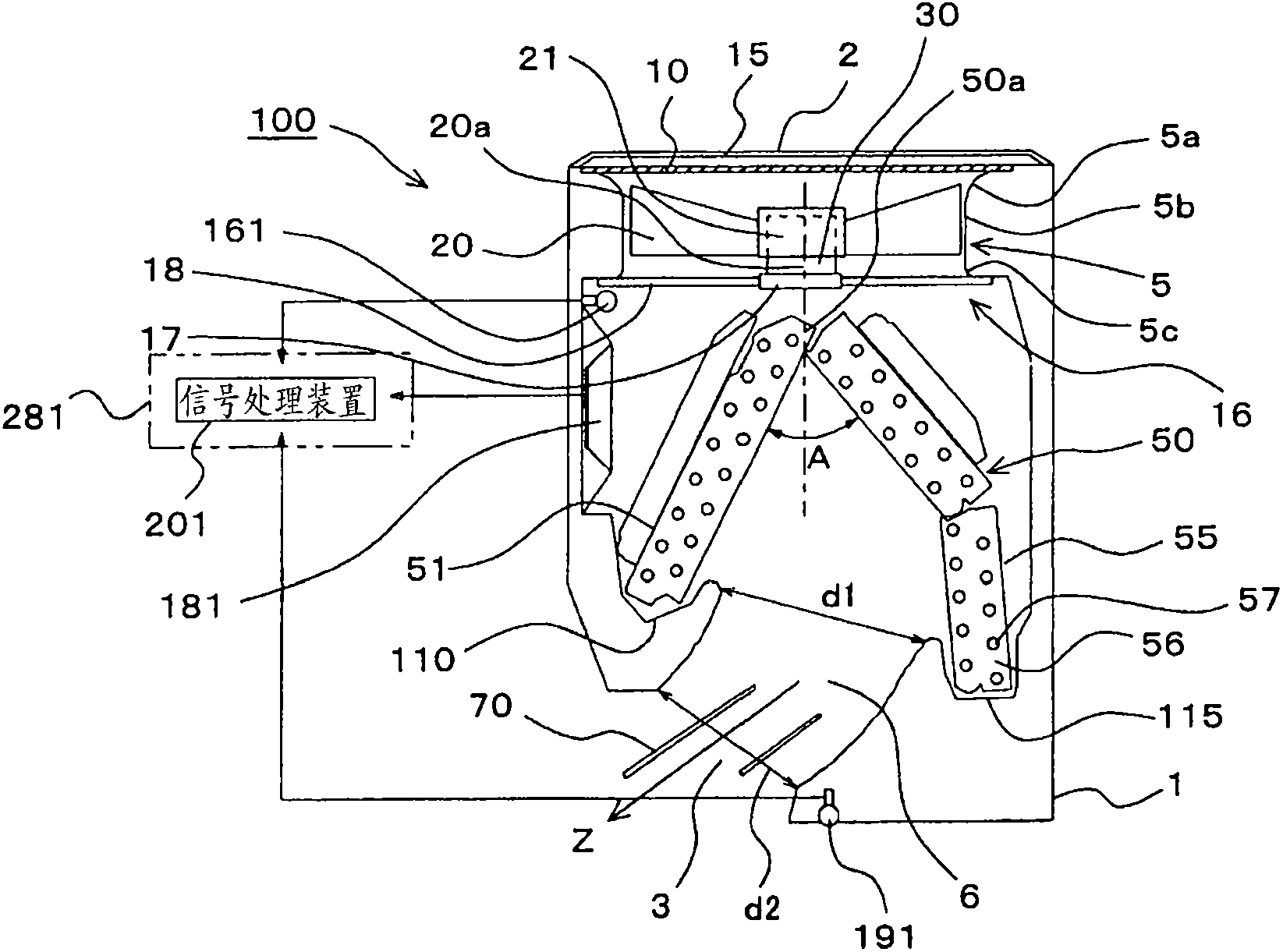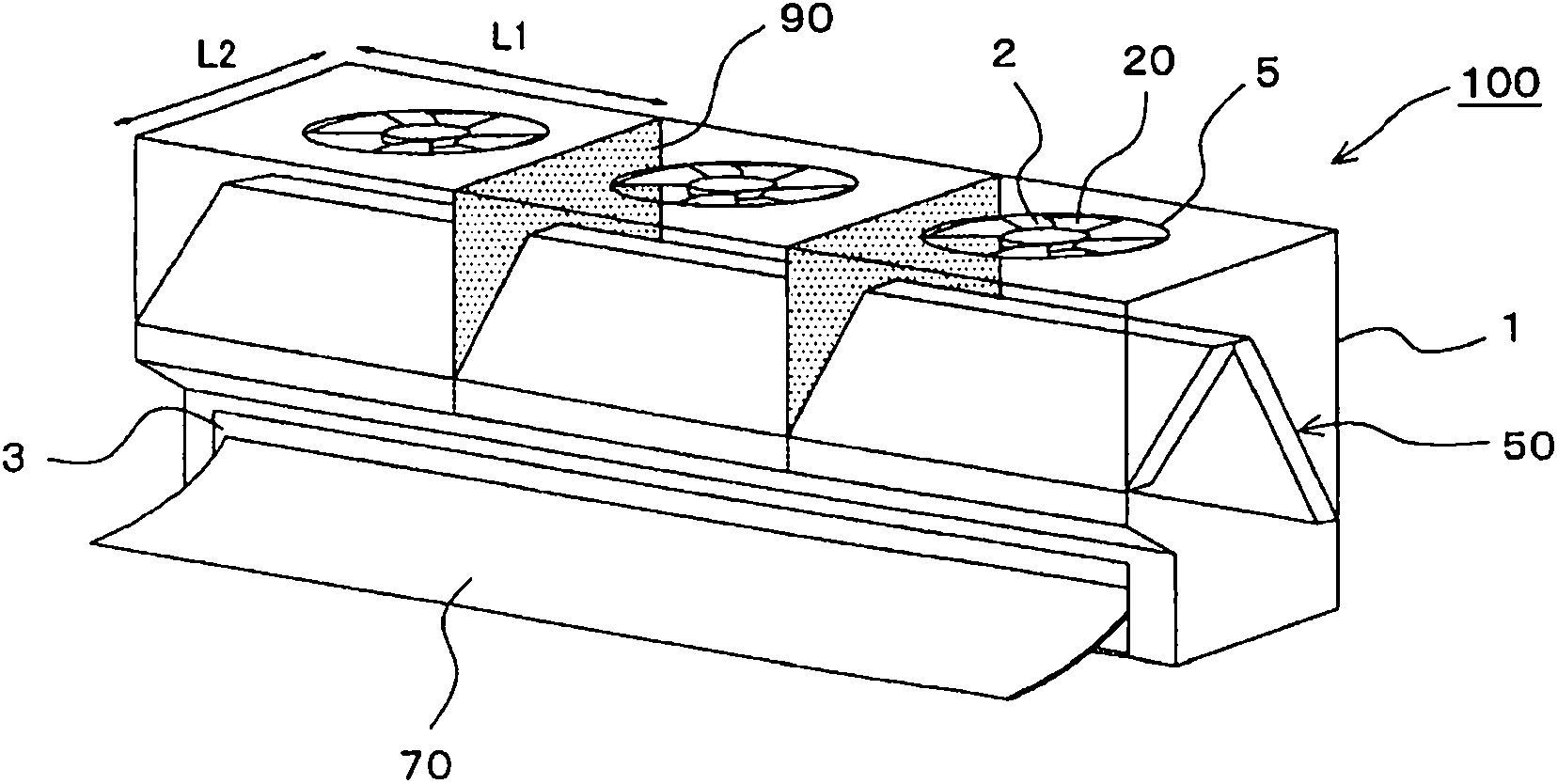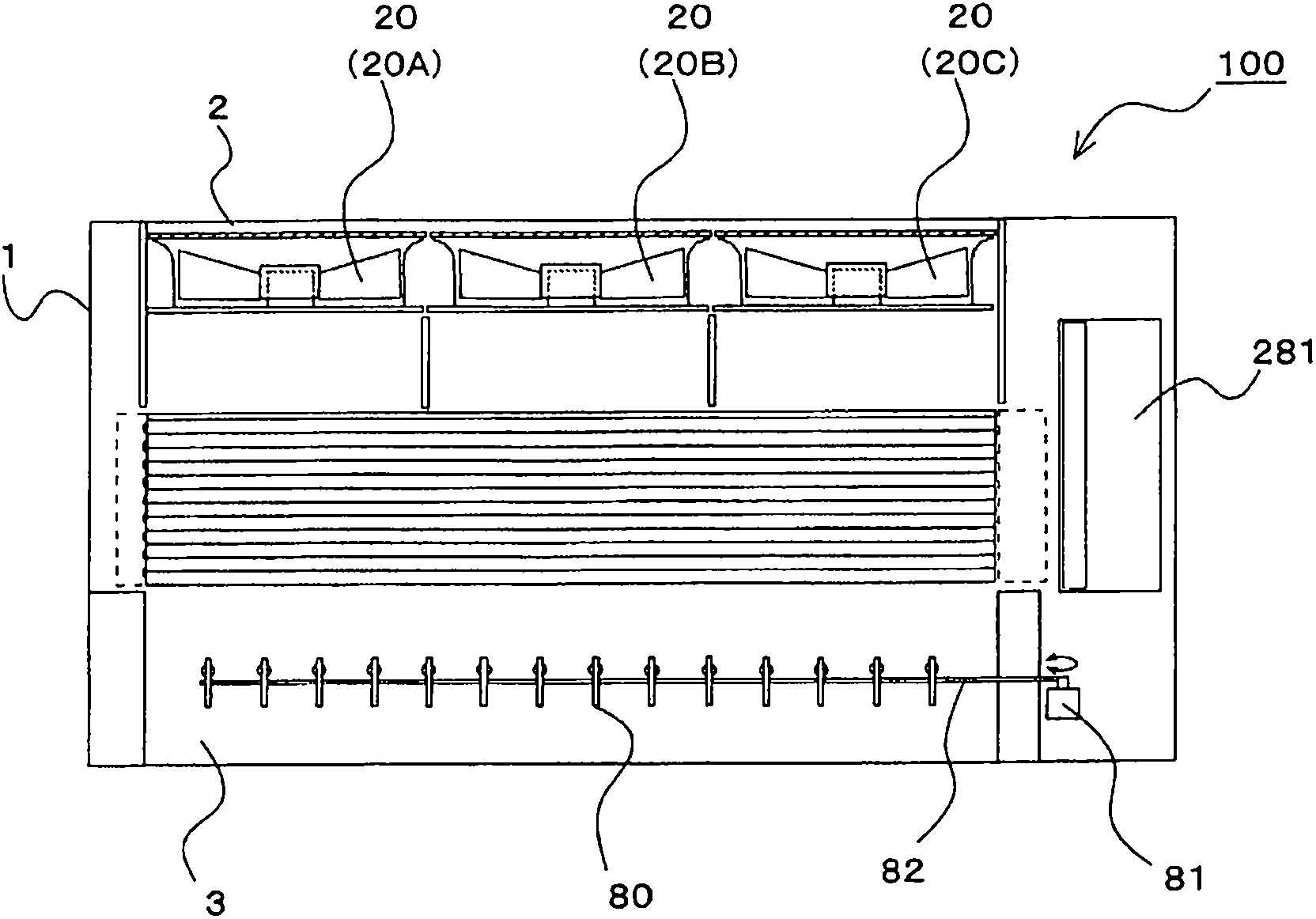Indoor unit of air-conditioning apparatus and air-conditioning apparatus
A technology for air conditioners and indoor units, applied in the field of indoor units, can solve problems such as inability to deliver airflow
- Summary
- Abstract
- Description
- Claims
- Application Information
AI Technical Summary
Problems solved by technology
Method used
Image
Examples
Embodiment approach 1
[0034]
[0035] figure 1 It is a longitudinal sectional view showing the indoor unit (referred to as the indoor unit 100 ) of the air conditioner according to Embodiment 1 of the present invention. figure 2 is a perspective view showing the appearance of the indoor unit. In Embodiment 1 and the embodiments described later, the figure 1 The left side of the indoor unit 100 will be described as the front side. The following is based on figure 1 with figure 2 Next, the structure of the indoor unit 100 will be described.
[0036] (overall structure)
[0037] The indoor unit 100 supplies conditioned air to an air-conditioned area such as a room by utilizing a refrigerating cycle that circulates a refrigerant. The indoor unit 100 mainly includes a casing 1 , a fan 20 and a heat exchanger 50 . The casing 1 is formed with a suction port 2 for sucking indoor air into the interior and a blower port 3 for supplying air-conditioning air to an air-conditioning target area. The ...
Embodiment approach 2
[0131] (split leaves into multiples)
[0132] When controlling the air volumes of the upper and lower blades 70, the left and right blades 80, and the respective fans 20 based on the detection results of the infrared sensor 410, the upper and lower blades 70 and the left and right blades 80 can be divided into a plurality, and these blades can be controlled separately. In this way, comfort can be further improved. In addition, in this second embodiment, items not particularly described are the same as those in the first embodiment, and the same functions and structures are described using the same symbols.
[0133] Figure 11 It is a front sectional view showing the indoor unit according to Embodiment 2 of the present invention. Figure 12 is a perspective view showing the indoor unit. in addition, Figure 11 It is a front cross-sectional view cut along the approximate center of the fan 20 .
[0134] In the indoor unit 100 according to Embodiment 2, the vertical vanes 70 ...
Embodiment approach 3
[0142] (Divide the blades into the same number as the number of fans)
[0143]By increasing the number of divisions of the upper and lower blades 70 and the left and right blades 80, comfort can be further improved. In addition, by making the number of divisions of the upper and lower blades 70 and the left and right blades 80 the same as the number of fans 20, comfort can be further improved. In Embodiment 3, items that are not particularly described are the same as Embodiment 1 or Embodiment 2, and the same functions and structures are described using the same symbols.
[0144] Figure 13 It is a front sectional view showing the indoor unit according to Embodiment 3 of the present invention. Figure 14 is a perspective view showing the indoor unit. in addition, Figure 13 It is a front cross-sectional view cut along the approximate center of the fan 20 . Figure 13 with Figure 14 The illustrated indoor unit 100 represents an indoor unit 100 having three fans 20 (fans ...
PUM
 Login to View More
Login to View More Abstract
Description
Claims
Application Information
 Login to View More
Login to View More - R&D
- Intellectual Property
- Life Sciences
- Materials
- Tech Scout
- Unparalleled Data Quality
- Higher Quality Content
- 60% Fewer Hallucinations
Browse by: Latest US Patents, China's latest patents, Technical Efficacy Thesaurus, Application Domain, Technology Topic, Popular Technical Reports.
© 2025 PatSnap. All rights reserved.Legal|Privacy policy|Modern Slavery Act Transparency Statement|Sitemap|About US| Contact US: help@patsnap.com



